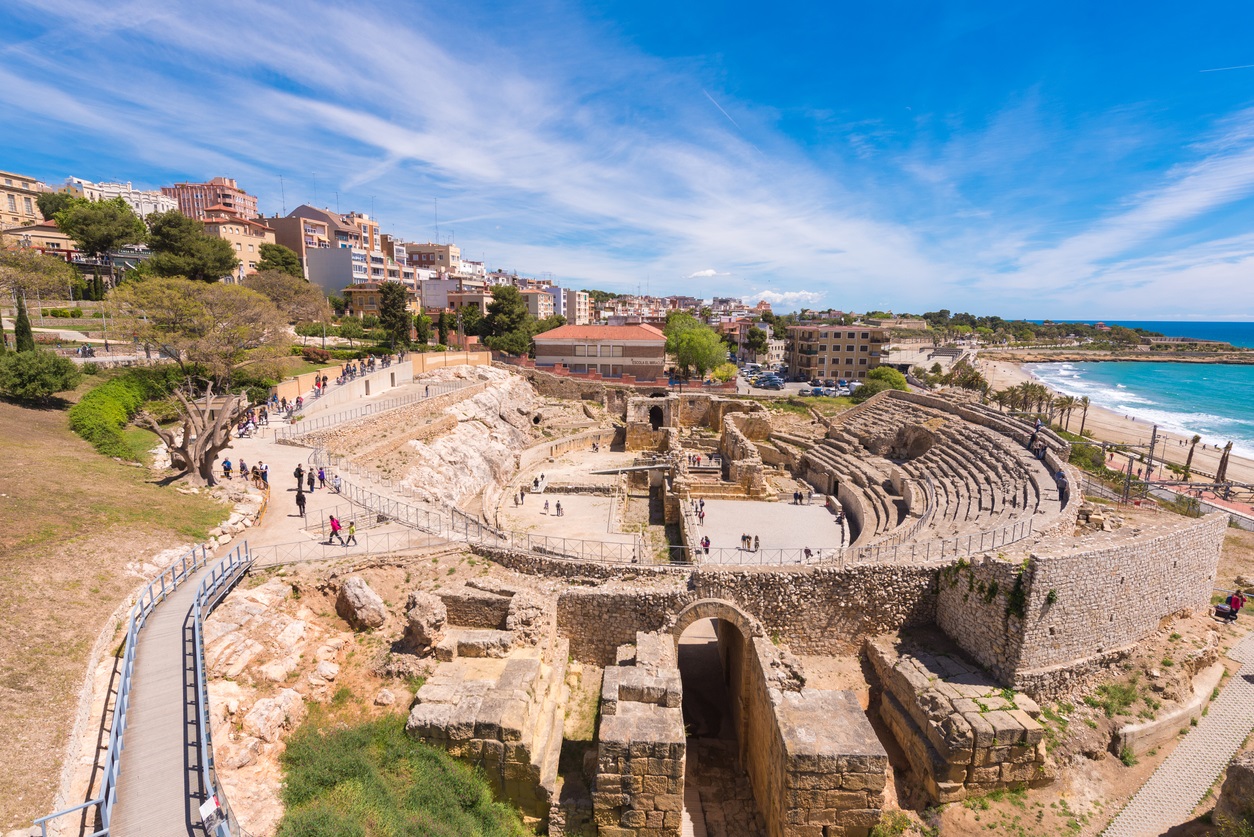Catalunya remains prominent on the preference list of any visitor to Spain. Dali, Gaudi, and Messi may no longer be around but their influence lingers everywhere from the Camp Nou to the beaches around Figueres.
Occasionally, though, the visitor might look for a break from the stylish modernisme, chic galleries, and elegant shopping arcades. This is where Tarragona comes in, a city where the region’s history is apparent at every turn.
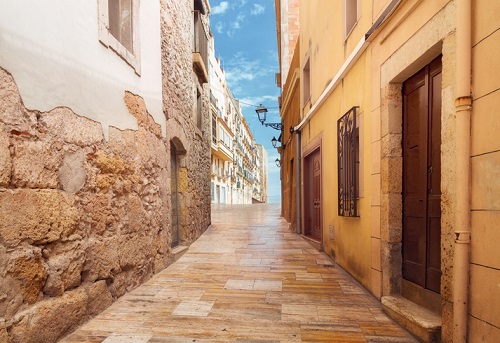
Tarragona was the Catalan destination of choice for the ancient Romans when they packed their vacation togas and hopped a galley for the cruise west across the Mediterranean. It had been a commercial stop-off for the Phoenicians previously, but under Roman rule, it flourished.
RELATED: Recommendations For Getting To and Around Catalunya
Tarraco, as the Romans named it, was a key port city of the Western Empire, gateway to the province of Iberia. Its importance can be recognized in the sheer extent of Roman remains in Tarragona, a UNESCO World Heritage Spanish classical site second only to Merida.
Roman Ruins Found Across Tarragona
The obvious starting point of any Roman tour is the Amphitheatre, dating from the second century, with its peerless vantage point overlooking the sea. The steep seating pitch shows that the Romans were as adept at packing in the crowds as any modern football stadium designer. Much of the current edifice has been restored, as the original stone was hacked around by Vandals and Visigoths and plundered for the construction of churches and the port.
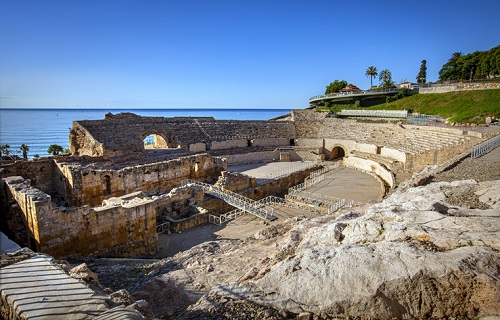
The first shows here were gladiatorial battles, pitting slaves against each other in hand-to-hand combat or, in later years, against wild animals shipped in from the African colonies.
The ruins of the Circus require some imagination to get a sense of its dimensions, but the size suggests it staged the kind of chariot races beloved of swords-and-sandals movie directors, with viewing spaces for around 30,000 spectators, underlining that Tarragona was a major metropolis by ancient standards.
RELATED: 7 Top Seaside Wine Destinations You Can’t Miss in Europe
The impressive Archaeological Museum offers a succinct summary of the Roman legacy, with the highlights provided by ornate mosaics. The almost perfectly-intact third-century design showing marine creatures and fish is particularly memorable, a creative work that rivals and predates the feats of the later Catalan modernists (and might have influenced them).
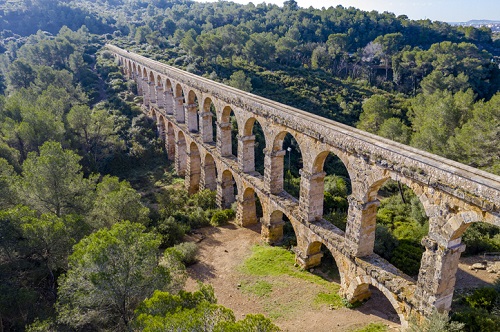
The ancient forum on the Rambla Nova was where the imperial bureaucrats would meet for business, hatching plots, and placing a few wagers on the weekend’s chariot racing. It serves a similar function for modern Tarragona, although the chat over coffee is more likely to be about Catalan politics or FC Barcelona’s current form.
Tarragona was an early adopter when it came to Christianity, as the dates of some of the inscriptions at the necropolis testify. Saint Paul wrote to the Romans announcing his intention to visit Spain, and Catholic tradition holds that he preached in Tarragona, something of a dangerous venture at a time when Christians could find themselves facing a lion in the arena.
The Cathedral, a mish-mash of Gothic and Romanesque styles, dates from 1154, although it has been modified and restored considerably. It’s a symbol of a city that has a reputation for piety and dignity, in contrast to some of the brasher resorts on the nearby Costa Daurada.
Wine, History and Cuisine Make for the Perfect Blend
Not that Tarragona is all about ancient history and prayers. The historic quarter of the city has plenty of stylish wine bars dotted around its atmospheric alleyways and squares. Each has a distinctive clientele, from students sharing beers and tapas to the after-work crowd winding down with a chilled cava, or the clubbers grabbing a cocktail before hitting the dance floors in the fashionable nightlife spots up the coast.
Modern Catalan cuisine has also gained a foothold in the ancient city, Chefs showcase the excellent seafood from the Ebro delta, or put a playful spin on Catalan classics like Suquet de peix fish stew or samfaina vegetable ratatouille.
If wine and cuisine are your thing, conveniently, Tarragona is situated just an hour away from the stunningly beautiful wine region of Priorat. You can easily make a day trip to the region, or stay at any number of remarkable vineyard resorts for a few days while you explore.
RELATED: Here’s an Ideal Itinerary for Visiting the Priorat Wine Region
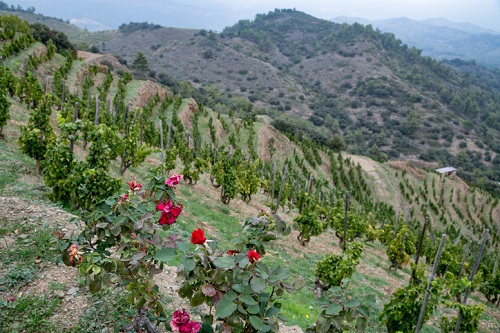
For visitors looking to plan a picnic while they explore the city, Tarragona’s Mercat Central is a striking Modernista building where the produce matches the architecture, offering stalls crammed with local fish, fruit, hams, and cheeses, ready to partner with fresh-baked bread.
It’s a perfect accompaniment to a relaxed afternoon on one of the high rows of the Amphitheatre looking out on the rays reflecting off the Mediterranean.
You are reading “Is Tarragona Spain Worth Visiting? A Background on the Ancient Roman Culture of Tarragona” Back To Top
what is Tarragona known for? why to visit Tarragona Spain: Spanish wineries to visit
If you enjoyed this guide, consider joining the Facebook Group to interact with other Winetravelers and for travel inspiration around the world and be sure to follow along with us on Instagram.
